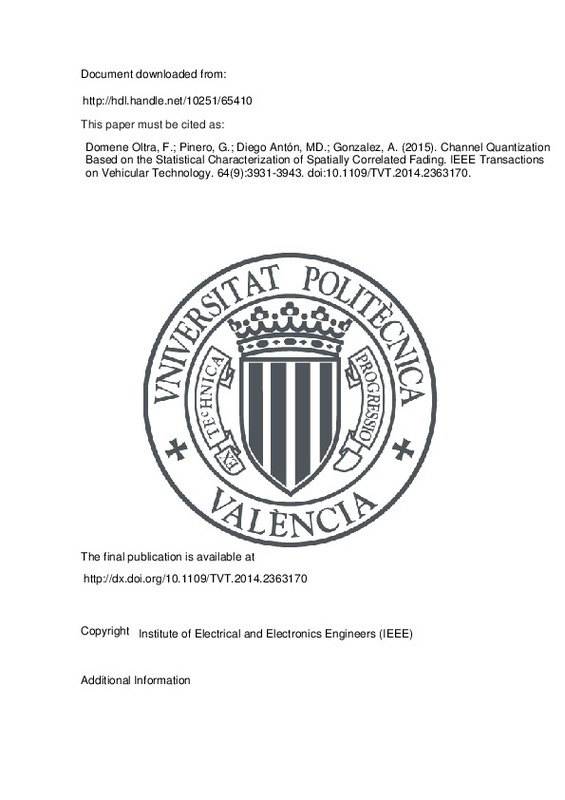JavaScript is disabled for your browser. Some features of this site may not work without it.
Buscar en RiuNet
Listar
Mi cuenta
Estadísticas
Ayuda RiuNet
Admin. UPV
Desde el lunes 3 y hasta el jueves 20 de marzo, RiuNet funcionará en modo de solo lectura a causa de su actualización a una nueva versión.
Channel Quantization Based on the Statistical Characterization of Spatially Correlated Fading
Mostrar el registro completo del ítem
Domene Oltra, F.; Piñero Sipán, MG.; Diego Antón, MD.; Gonzalez, A. (2015). Channel Quantization Based on the Statistical Characterization of Spatially Correlated Fading. IEEE Transactions on Vehicular Technology. 64(9):3931-3943. https://doi.org/10.1109/TVT.2014.2363170
Por favor, use este identificador para citar o enlazar este ítem: http://hdl.handle.net/10251/65410
Ficheros en el ítem
Metadatos del ítem
| Título: | Channel Quantization Based on the Statistical Characterization of Spatially Correlated Fading | |
| Autor: | Domene Oltra, Fernando | |
| Entidad UPV: |
|
|
| Fecha difusión: |
|
|
| Resumen: |
Multiuser multiple-input-multiple-output (MUMIMO) techniques, such as scheduling and precoding, have shown to improve the spectral efficiency of wireless communication systems. However, these techniques require an accurate ...[+]
|
|
| Palabras clave: |
|
|
| Derechos de uso: | Reserva de todos los derechos | |
| Fuente: |
|
|
| DOI: |
|
|
| Editorial: |
|
|
| Versión del editor: | http://dx.doi.org/10.1109/TVT.2014.2363170 | |
| Código del Proyecto: |
|
|
| Agradecimientos: |
|
|
| Tipo: |
|







![[Cerrado]](/themes/UPV/images/candado.png)


